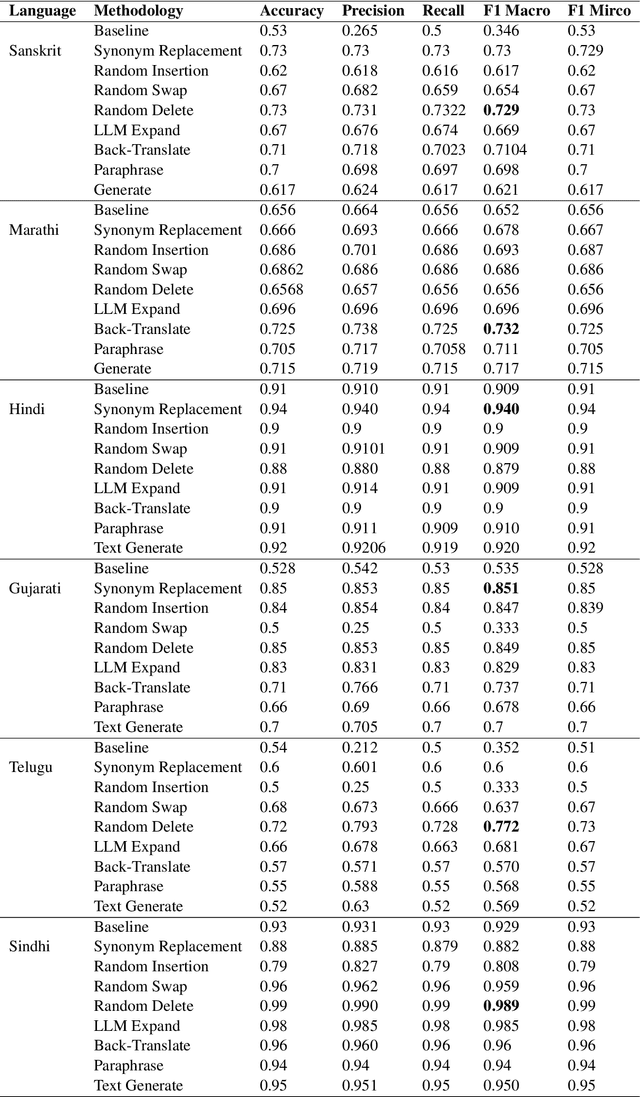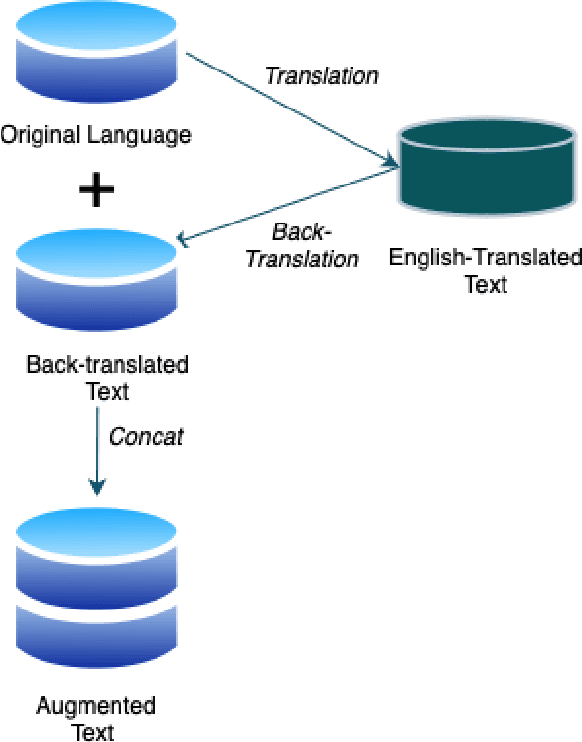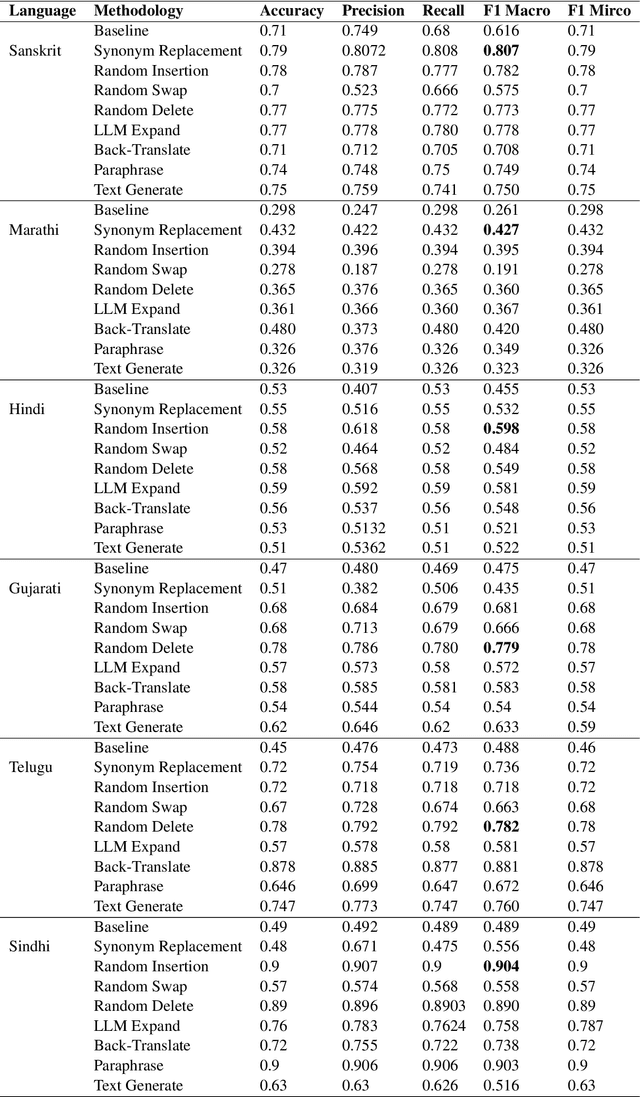Niraj Yagnik
IndiText Boost: Text Augmentation for Low Resource India Languages
Jan 23, 2024



Abstract:Text Augmentation is an important task for low-resource languages. It helps deal with the problem of data scarcity. A data augmentation strategy is used to deal with the problem of data scarcity. Through the years, much work has been done on data augmentation for the English language. In contrast, very less work has been done on Indian languages. This is contrary to the fact that data augmentation is used to deal with data scarcity. In this work, we focus on implementing techniques like Easy Data Augmentation, Back Translation, Paraphrasing, Text Generation using LLMs, and Text Expansion using LLMs for text classification on different languages. We focus on 6 Indian languages namely: Sindhi, Marathi, Hindi, Gujarati, Telugu, and Sanskrit. According to our knowledge, no such work exists for text augmentation on Indian languages. We carry out binary as well as multi-class text classification to make our results more comparable. We get surprising results as basic data augmentation techniques surpass LLMs.
MedLM: Exploring Language Models for Medical Question Answering Systems
Jan 21, 2024Abstract:In the face of rapidly expanding online medical literature, automated systems for aggregating and summarizing information are becoming increasingly crucial for healthcare professionals and patients. Large Language Models (LLMs), with their advanced generative capabilities, have shown promise in various NLP tasks, and their potential in the healthcare domain, particularly for Closed-Book Generative QnA, is significant. However, the performance of these models in domain-specific tasks such as medical Q&A remains largely unexplored. This study aims to fill this gap by comparing the performance of general and medical-specific distilled LMs for medical Q&A. We aim to evaluate the effectiveness of fine-tuning domain-specific LMs and compare the performance of different families of Language Models. The study will address critical questions about these models' reliability, comparative performance, and effectiveness in the context of medical Q&A. The findings will provide valuable insights into the suitability of different LMs for specific applications in the medical domain.
 Add to Chrome
Add to Chrome Add to Firefox
Add to Firefox Add to Edge
Add to Edge